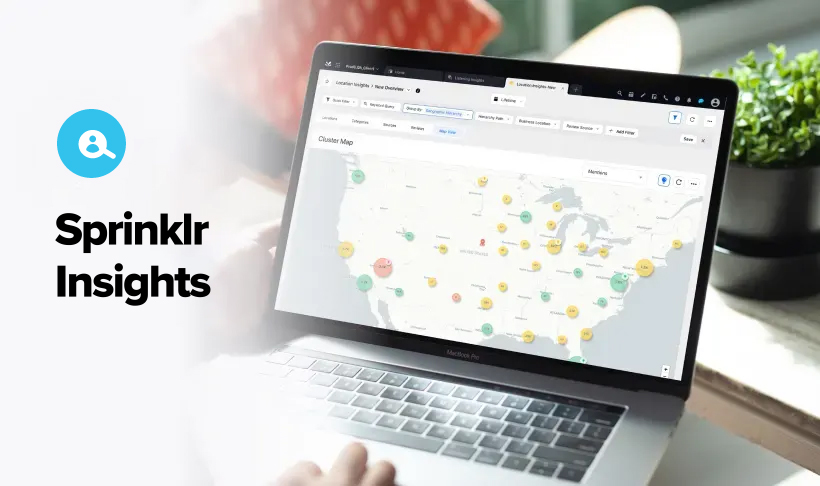What is sentiment analysis?
Sentiment analysis, also known as opinion mining, is the process of gauging the tone or emotion of a series of words — whether positive, negative, or neutral — on social media, in customer feedback forms, online surveys, etc. It provides you with a bird’s eye view of how people feel about your brand, product(s), advertisements, and even your competitors.
Sentiment analysis allows you to listen to your customers, understand their needs — including what they like or dislike — and respond accordingly, helping you maintain your brand reputation and loyalty.
How does sentiment analysis work?
Sentiment analysis uses machine learning, statistics, and natural language processing (NLP) to unearth the thoughts and feelings people are expressing on various digital platforms. Key types of algorithms used in sentiment analysis models are:
Rule-based
Rule-based sentiment analysis defines polarized words (positive, negative, neutral) present in the text, counts the number of positive and negative words, and recognizes the tone or sentiment of the text. NLP techniques such as lexicons — lists of words and the emotions they convey — are used to create customized rules that help the system count the number of polarized words to identify sentiments. For example, here is a review:
“The food here was absolutely amazing! I had a great time with my family.”
In the rule-based approach, the positive words such as 'amazing,' and 'great' will uncover the tone, which is positive in this case.
Automatic or machine learning-based
With automatic sentiment analysis, machine-learning models are trained with data sets that contain positive and negative words. Once the training is complete, these models can automatically detect the tone or sentiment behind the text.
Hybrid
Hybrid sentiment analysis involves both manual and automatic approaches for sentiment analysis. It is known to produce highly accurate results.
Types of sentiment analysis
Key types of sentiment analysis include:
Intent-based sentiment analysis
Intent-based sentiment analysis detects and understands the intention of your customers toward your brand, product, service, or even experience (for example, whether they are actually interested in buying your product). Tracking customer behavior online can help you create a pattern and run intelligently targeted ads.
Emotion-detection sentiment analysis
Sentiment analysis is used to analyze a range of emotions of the customers: happiness, frustration, disappointment, etc. A type of NLP technique — known as lexicons — is used to detect the emotions present in a text.
Aspect-based sentiment analysis
Sentiment analysis aids you in determining how your customers feel toward your brand or certain aspects of your product or service. For example:
Customer review: I love the touch sensibility and the user interface of this phone. The dual camera is simply excellent, and upon charging, the phone's battery lasts more than 48 hours!
The review highlights the customer's experience of buying the smartphone's technical aspects: touch sensibility, user interface, camera quality, and battery life. Aspect-based analysis helps you learn specific elements that your customers like and dislike and make changes accordingly.
Fine-grained analysis
To make your sentiment analysis more precise, you can add more polarity categories: very negative, negative, neutral, positive, and very positive, helping you prioritize customer reviews and understand their views on your brand, product, or service. For instance, the reviews categorized as very negative should be immediately addressed by the concerned department to avoid further conflicts.
Sentiment analysis use cases
Used by many organizations around the globe, sentiment analysis has several use cases, enabling you to:
Analyze your product
Sentiment analysis can aid you in understanding your customers’ opinions and feelings toward your product, with a focus on the features of your choice, such as price, quality, and packaging.
For example, you have launched a new product and want to learn how your product is performing on the market. With the help of a robust unified customer experience management (Unified-CXM) platform, you can use specific keywords to gather information in real-time and at scale, helping you understand customer sentiment toward your product.
Monitor your social media
Today, customers use social media platforms, including X, formerly Twitter, Instagram, and Facebook, to review products and openly express their love, criticism, or disappointment. Sentiment analysis tools allow you to monitor millions of social media accounts for people's opinions about your products or a specific industry trend. They enable you to quickly analyze years of customer feedback, respond to critical reviews, and avert PR-related crises.
Track your competitors’ strategies
Sentiment analysis helps you conduct in-depth market research, understand your competitors’ strategies (for example, what people like about their product), and adopt best industry practices. This provides you an edge over your competitors.
For instance, when your competitor launches a new product or service, you can use sentiment analysis to understand what customers like and dislike about their offering and use that feedback to improve your own products or services.
What are the benefits of sentiment analysis?
Sentiment analysis offers multiple benefits, such as:
Establishing a loyal customer base
Sentiment analysis lets you prioritize your customers and respond to them on platforms of their choice. For example, immediately resolving their queries makes people feel they are being heard, helping you build a loyal customer base.
Proactive crisis management
Sentiment analysis can be an efficient tool to avert PR disasters or manage social media crises that have the potential to tarnish your brand's reputation. For example, it equips companies to proactively respond to damaging statements or negative reviews from customers and protect the brand image.
Improved customer service
Sentiment analysis allows customer support agents to easily find and track previous messages from customers and understand the issues they are facing, helping agents resolve customer queries quickly and efficiently.
Learn more: Capturing Insights With (Visual) Social Listening
Visualize customer sentiment with Sprinklr Visual Insights
Translating massive volumes of data into actionable insights to drive business decisions is impossible — without the help of AI. Trusted by leading brands, including Clarabridge, Wonderflow, and Birdie, Sprinklr's AI-enabled Visual Insights analyzes billions of visual data points across customer journeys to deliver a superior customer experience and provide powerful insights that help your business grow tremendously.
Sprinklr's Visual Insights enables you to:
Extract and analyze data from billions of digital photos available online, and provide vital insights such as user location, aiding the marketing team in creating personalized and targeted ads
Identify high-performing user-generated content (UGC) and capture relevant mentions in digital visuals to help the marketing team report, measure, and repost the content.
Use logo detection and optical character recognition to flag visual content (fake products, spam offers, profanity, off-brand memes) that poses a threat to your brand.
Accurately predict the age and sentiment (positive, negative, or neutral) of the visuals posted online. The accuracy of the projected results is more than 80%+.
Thank you for contacting us.
A Sprinklr representative will be in touch with you shortly.
Contact us today, and we'll create a customized proposal that addresses your unique business needs.
Request a Demo
Welcome Back,
No need to fill out any forms — you're all set.



